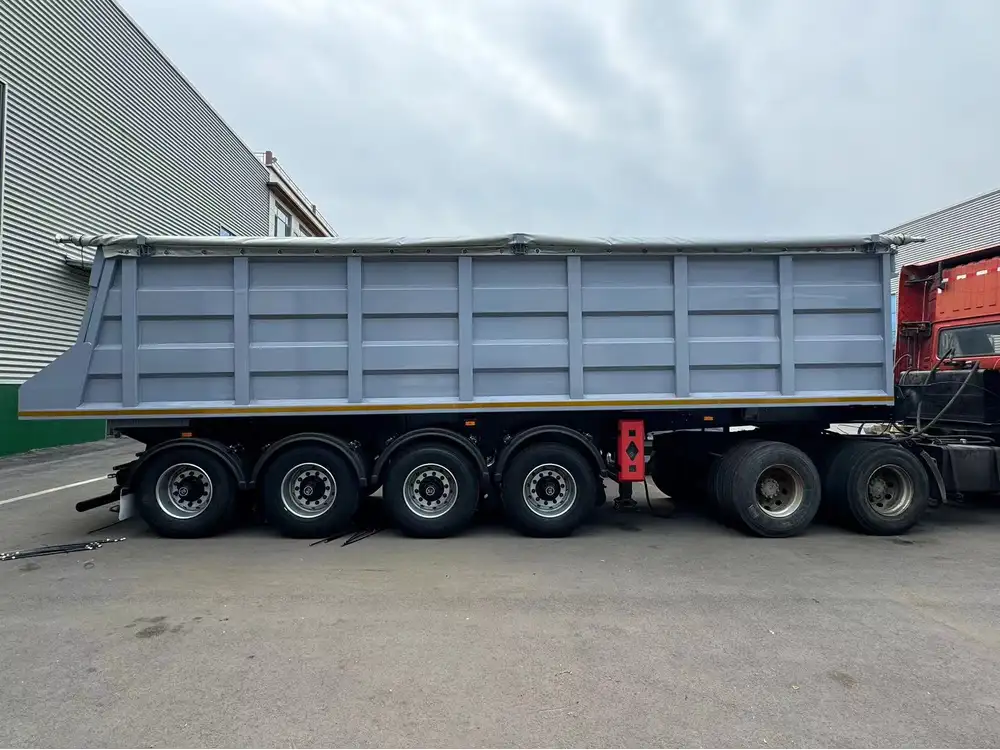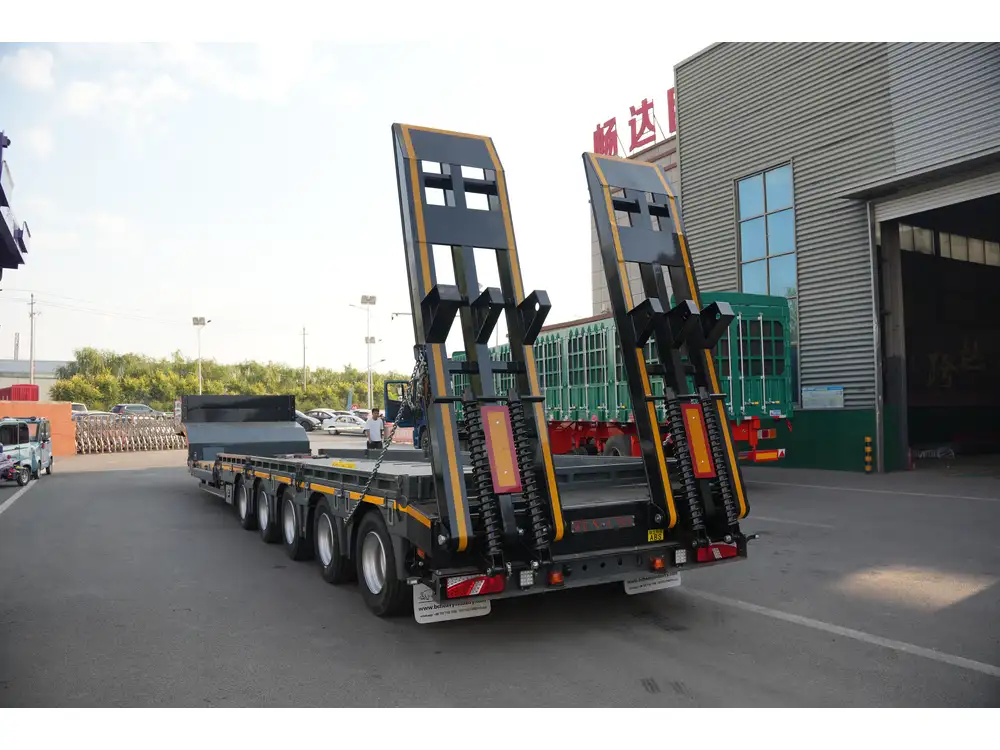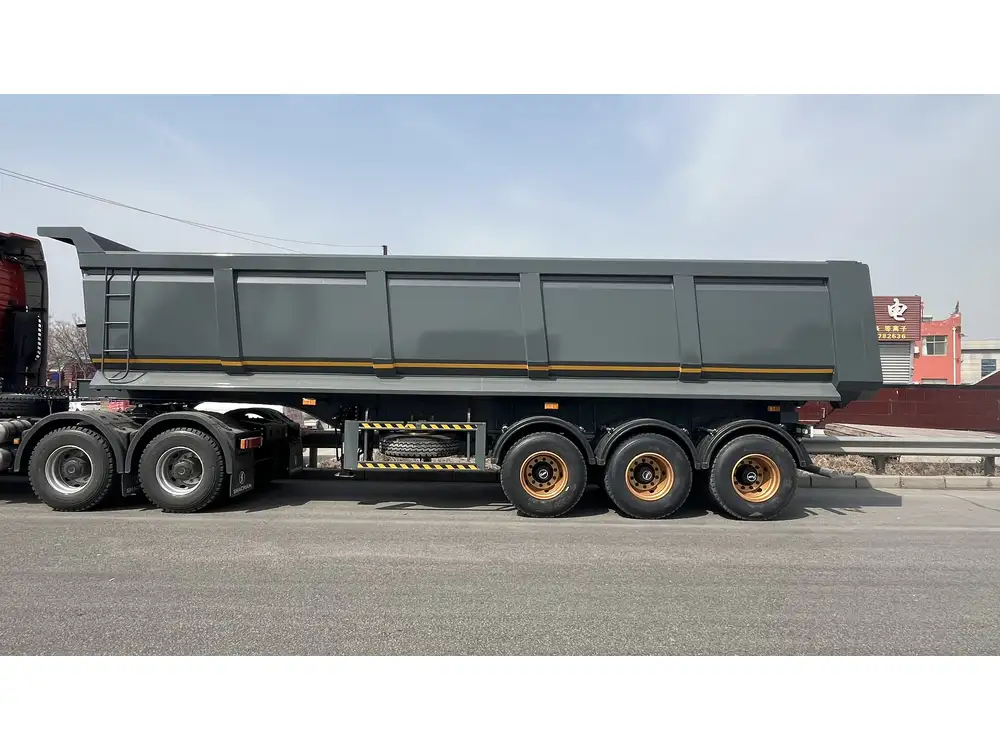Unraveling the Basics of Belly Dump Trailers
Belly dump trailers, an essential asset in the transportation and construction industries, are specifically designed to efficiently unload bulk materials. Featuring a unique design that allows for a dual dump capability, these trailers facilitate the quick and effective disbursement of contents, such as aggregates, dirt, and other bulk materials.
What Defines a Belly Dump Trailer?
A belly dump trailer is characterized by its bottom-dumping mechanism, which distinguishes it from traditional side dump trailers. Typically equipped with two hoppers and a single axle or tandem axle setup, these trailers can efficiently discharge their load by opening a gate located at the underside of the trailer. The unloading process can be executed swiftly, making it ideal for projects requiring rapid turnover.

How Many Yards Can a Belly Dump Trailer Carry?
Capacity Overview: The Critical Numbers
To answer the question, “How many yards in a belly dump trailer?” we must consider several factors, including the types of materials being transported, the specific model of the trailer, and its configuration.
Common Capacities
| Trailer Type | Capacity Range (Cubic Yards) | Typical Materials |
|---|---|---|
| Standard Belly Dump | 20-25 yards | Sand, gravel, dirt |
| Heavy-duty Belly Dump | 25-35 yards | Larger aggregates, asphalt |
| Lite Belly Dump | 15-20 yards | Mulch, compost |
Standard Models: Typically, a standard belly dump trailer will have a carrying capacity of between 20 and 25 cubic yards. This capacity allows for optimal load management while maintaining road safety during transportation.
Heavy-duty Models: For those in need of greater capacity, heavy-duty belly dump trailers can accommodate approximately 25 to 35 cubic yards of material. These models are primarily utilized on larger construction sites or when transporting heavier loads such as asphalt or larger rock aggregates.
Lite Models: Contrary to the standard options, lighter variants can carry around 15 to 20 cubic yards, making them suitable for lighter, less dense materials like mulch or compost.

Key Considerations for Determining Capacity
Material Density: The density of the material being transported directly affects the volume capacity. For example, a cubic yard of gravel weighs significantly more than a cubic yard of sand.
Local Regulations: Before deciding on a specific payload, it’s vital to consult local weigh station regulations, as some jurisdictions impose limits on weight, affecting trailer capacity.
Trailer Configuration & Design: Different configurations, such as single versus tandem axles, influence the overall load distribution and potentially the maximum safe capacity.
Advantages of Using Belly Dump Trailers
Efficient Unloading Mechanism
One of the primary advantages of belly dump trailers is their ability to unload quickly and efficiently. Unlike traditional dump trucks, which may require more time to maneuver for unloading, belly dumps can discharge their load while the truck is in motion—allowing for a seamless process, especially on busy job sites.

Reduction of Material Damage
Due to the operational design of belly dump trailers, the contents experience minimal trauma during transit, significantly reducing the risk of breakage or damage. This is particularly crucial when transporting fragile aggregates or materials sensitive to pressure.
Versatility Across Environments
Belly dump trailers are remarkably versatile. They are suitable for multiple applications including, but not limited to:
- Construction sites
- Road paving projects
- Earthmoving and excavation sites
- Landscaping projects
Comparing Belly Dump Trailers to Other Trailer Types

Belly Dump Trailers vs. Side Dump Trailers
| Feature | Belly Dump Trailers | Side Dump Trailers |
|---|---|---|
| Unloading Mechanism | Bottom unloading | Side unloading |
| Discharge Rate | Faster (less space needed) | Slower (space between loads) |
| Load Distribution | More stable during unloading | Risk of tipping |
| Material Diversity | Suitable for various materials | Limited to lighter loads |
While side dump trailers offer their own advantages, such as the ability to distribute loads in a precise line, belly dump trailers excel in speed, efficiency, and stability.
Belly Dump Trailers vs. End Dump Trailers
| Feature | Belly Dump Trailers | End Dump Trailers |
|---|---|---|
| Unloading Angle | Flat (horizontal) | Steep (up to 45 degrees) |
| Ideal Loading Materials | Heavy aggregates | Loose materials |
| Risk of Spillage | Lower risk | Higher risk due to angle |
End dump trailers are typically better suited for loosely held materials, while belly dump trailers offer more controlled unloading, minimizing spill risk.
Factors Influencing the Decision to Use Belly Dump Trailers

Load Type and Application
When selecting a trailer, the type of load is paramount. For heavier materials that need precise unloading, belly dump trailers are preferred. Conversely, for lighter or bulkier materials easily handled with a steep drop, end dump trailers might be better.
Project Timeline and Efficiency Requirements
For projects with stringent timelines, belly dump trailers provide significant advantages, as the rapid unloading capability helps maintain workflow momentum.
Budget Constraints
While belly dump trailers are highly efficient, they often come with a higher upfront cost compared to traditional options. However, the long-term savings generated through productivity and efficiency can be worth the investment.

Maintenance and Care for Belly Dump Trailers
Proper maintenance of belly dump trailers ensures longevity and efficiency.
Essential Maintenance Tips
Regular Inspections: Routine checks for wear and tear, particularly around the unloading mechanisms and axle integrity, will prevent malfunctions.
Lubrication: Keeping joints and moving parts well-lubricated reduces friction and potential damage.
Tire Maintenance: Proper tire pressure is vital for safety and effective load transportation.
Cleaning: Debris buildup can lead to operational inefficiencies. Regular cleaning of the trailer bed and unloading area ensures optimal performance.
Recognizing Signs of Wear
- Uneven tire wear
- Unusual noises during operation
- Difficulty in the unloading process
Addressing these signs promptly can save on repairs and downtime.

Conclusion: Maximizing the Efficiency of Belly Dump Trailers
In light of the information presented, it’s clear that belly dump trailers play a crucial role in the efficiency and productivity of various industries. Understanding the carrying capacities, advantages, maintenance requirements, and optimal applications will empower users to make informed decisions tailored to their specific needs.
As we explore the dynamic world of transportation solutions, belly dump trailers emerge as invaluable tools, seamlessly bridging the gap between material acquisition and deployment. By recognizing their attributes and capabilities, businesses can harness the full potential of these trailers, enhancing not just the bottom line, but also the overall workflow.
In conclusion, the question of how many yards can fit into a belly dump trailer is not merely a simple fact but an indicator of the efficiency and effectiveness these trailers can bring to your operation. Proper selection, usage, and maintenance can lead to a smoother operational flow and greater financial outcomes, solidifying belly dump trailers as essential components in modern logistics and construction practices.



